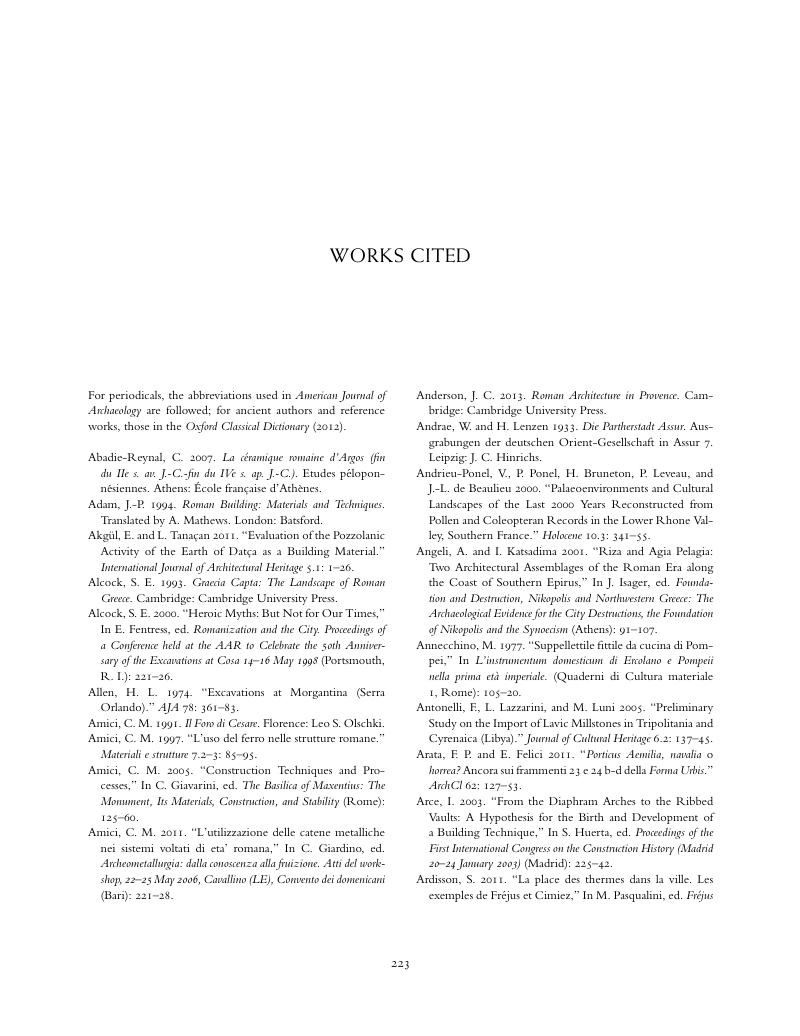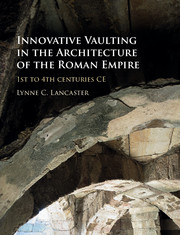Book contents
- Innovative Vaulting in the Architecture of the Roman Empire
- Frontispiece
- Innovative Vaulting in the Architecture of the Roman Empire
- Copyright page
- Dedication
- Dedication
- Contents
- List of Figures
- List of Tables
- List of Web Figures
- List of Web Catalogs
- Preface
- 1 Introduction
- 2 Opus Caementicium
- 3 Barrel Vaults of Brick
- 4 Complex Vault Forms of Brick
- 5 Vaulting Tubes
- 6 Hollow Voussoirs
- 7 Vaulting Ribs of Armchair Voussoirs
- 8 Vault Behavior and Structural Form
- 9 Vaulting Techniques in Context
- Notes
- Bibliography
- Index
- References
Bibliography
Published online by Cambridge University Press: 05 November 2015
- Innovative Vaulting in the Architecture of the Roman Empire
- Frontispiece
- Innovative Vaulting in the Architecture of the Roman Empire
- Copyright page
- Dedication
- Dedication
- Contents
- List of Figures
- List of Tables
- List of Web Figures
- List of Web Catalogs
- Preface
- 1 Introduction
- 2 Opus Caementicium
- 3 Barrel Vaults of Brick
- 4 Complex Vault Forms of Brick
- 5 Vaulting Tubes
- 6 Hollow Voussoirs
- 7 Vaulting Ribs of Armchair Voussoirs
- 8 Vault Behavior and Structural Form
- 9 Vaulting Techniques in Context
- Notes
- Bibliography
- Index
- References
Summary

- Type
- Chapter
- Information
- Innovative Vaulting in the Architecture of the Roman Empire1st to 4th Centuries CE, pp. 223 - 246Publisher: Cambridge University PressPrint publication year: 2015

